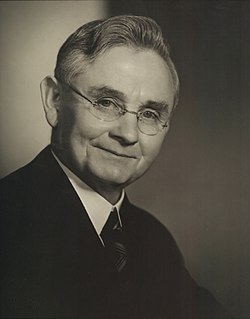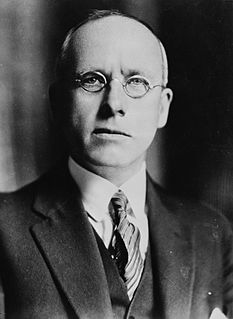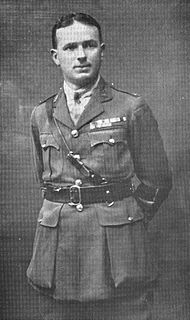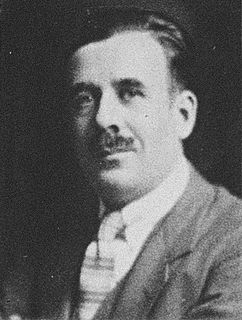
The 1993 New Zealand general election was held on 6 November 1993 to determine the composition of the 44th New Zealand Parliament. It saw the governing National Party, led by Jim Bolger, win a second term in office, despite a major swing away from National in both seats and votes. The opposition Labour Party, despite a slight drop in their support, managed to make gains in terms of seats. The new Alliance and New Zealand First parties gained significant shares of the vote, but won few seats. The election was New Zealand's last under the non-proportional first past the post electoral system.

The 1935 New Zealand general election was a nationwide vote to determine the shape of the New Zealand Parliament's 25th term. It resulted in the Labour Party's first electoral victory, with Michael Joseph Savage becoming the first Labour Prime Minister. The governing coalition, consisting of the United Party and the Reform Party, suffered a major defeat, attributed by many to their handling of the Great Depression. The year after the election, United and Reform took their coalition further, merging to form the modern National Party.

The 1938 New Zealand general election was a nationwide vote to determine the shape of the New Zealand Parliament's 26th term. It resulted in the governing Labour Party being re-elected, although the newly founded National Party gained a certain amount of ground.

The 1943 New Zealand general election was a nationwide vote to determine the shape of the New Zealand Parliament's 27th term. With the onset of World War II, elections were initially postponed, but it was eventually decided to hold a general election in September 1943, around two years after it would normally have occurred. The election saw the governing Labour Party re-elected by a comfortable margin, although the party nevertheless lost considerable ground to the expanding National Party.

The 25th New Zealand Parliament was a term of the New Zealand Parliament. It opened on 25 March 1936, following the 1935 election. It was dissolved on 16 September 1938 in preparation for the 1938 election.

The New Zealand general election of 1925 was held 4 November to elect a total of 80 MPs to the 22nd session of the New Zealand Parliament. A total number of 678,877 (90.02%) voters turned out to vote. In one seat there was only one candidate.

Brigadier James Hargest, was an officer of the New Zealand Military Forces, serving in both the First and Second World Wars. He was a Member of New Zealand's Parliament from 1931 to 1944, representing firstly the Invercargill and then the Awarua electorates.

Invercargill is an electorate of the New Zealand Parliament that has existed since 1866. Since the 2014 election, the electorate's representative is Sarah Dowie of the National Party.
Neville George Pickering was a New Zealand politician of the Labour Party.
Bay of Islands is a former New Zealand parliamentary electorate. It existed during various periods between 1853 and 1993. It was thus one of the original 24 electoral districts, and New Zealand's first ever MP was elected, although unopposed, in the Bay of Islands; Hugh Carleton thus liked to be called the Father of the House.
Awarua was a New Zealand parliamentary electorate from 1881 to 1996.

Edward Arthur "Ben" Waters was a New Zealand rower who won two medals at the 1930 British Empire Games. He later unsuccessfully stood as a Labour parliamentary candidate at several elections.
The United–Reform Coalition, also known as the National Political Federation from 1935, was a coalition between two of the three major parties of New Zealand, the United and Reform parties, from 1931–1936. The Coalition formed the Government of New Zealand from its formation in September 1931, successfully contesting and winning the 1931 general election in December. The Coalition was defeated at the 1935 general election by Labour. The following year the coalition was formalised by the formation of the modern New Zealand National Party.

The 22nd New Zealand Parliament was a term of the New Zealand Parliament. Its composition was determined by the 1925 election, and it sat until the 1928 election.

Michael Philip Wood is a New Zealand politician and, since winning the Mount Roskill by-election in December 2016, a member of the New Zealand House of Representatives. He is a member of the Labour Party.

The 1930 Invercargill by-election was a by-election during the 23rd New Zealand Parliament in the Southland electorate of Invercargill. The by-election occurred following the death of Sir Joseph Ward on 8 July 1930. The by-election, which was held on 13 August, was won by the late Prime Minister's second son, Vincent Ward against James Hargest.
The Grey Lynn by-election 1963 was a by-election held in the Grey Lynn electorate in Auckland during the term of the 33rd New Zealand Parliament, on 18 May 1963.

The 1945 Hamilton by-election was a by-election held during the 27th New Zealand Parliament in the Waikato electorate of Hamilton. The by-election occurred following the death of MP Frank Findlay and was won by Hilda Ross, both of the National Party.

The 2018 Northcote by-election was a New Zealand by-election that was held in Northcote on 9 June 2018. The seat became vacant on 15 April 2018, following the resignation of Jonathan Coleman, member of parliament, a member of the New Zealand National Party.
















